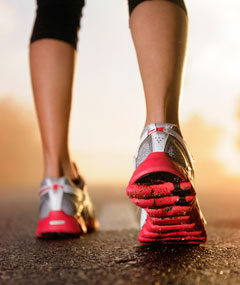When the pain from bunions is preventing you from wearing well-fitting shoes, participating in the activities you love, or when the deformity is causing problems with the rest of your foot, it may be time to consider bunion surgery.
At Foot Associates of New York, we have special expertise in the surgical treatment of bunions. We perform hundreds of foot procedures each year, including surgery for both moderate and advanced bunions.
Most our bunion surgery patients:
• feel only mild discomfort in the several days after surgery.
• walk immediately after the procedure with protective footwear.
• resume footwear between 10 days and three weeks after surgery, depending on the procedure.
• start progressive return to full activity at five to six weeks.
• do not experience recurrence or other related foot problems.
Every foot surgery takes place in an ambulatory surgery suite at NewYork-Presbyterian—the top-rated hospital in New York City—with a team of expert anesthesiologists and nurses who work closely with our foot surgeons. Our patients experience no pain during the procedure. Your procedure will be performed under sedation with local anesthesia. You will go home on the day of your procedure.
A consultation with a surgeon at Foot Associates of New York can help you decide whether bunion surgery is right for you.
Our Approach to Bunion Surgery
We understand that each patient has different goals for his or her treatment. We'll work with you to tailor a procedure that fits your lifestyle without compromising the resolution of the deformity. We have experience with a multitude of procedures, including complicated procedures and complex cases.
During your consultation, we'll ask you questions about your level of pain, activities, and goals, and use your answers to guide our recommendation. We will also take a standing X-ray and examine your foot for complications that might be caused by your bunions. Our goal is to help you make the best decision for your individual feet.
There is no single surgery that effectively addresses all bunions. We'll go over the approach and procedure that we feel is best for your bunions and any complications they may have caused. We customize every surgery with two goals in mind: to create the best correction and avoid recurrence.
Faster Recovery for People with Advanced Bunions
Bunions are considered advanced when the angle between the first and second metatarsal (the bones behind the toes) exceeds 15 degrees. If you have advanced bunions, a standard correction may not fully resolve the bunion and prevent recurrence.
We use surgical techniques for advanced bunions that have been developed, tested, and refined by Dr. Bar-David.
Most of our patients are able to bear weight on their feet immediately after the procedure.
What to Expect From Bunion Surgery
Bunion surgery involves cutting the bone, removing excess bone, and shifting the metatarsal bone back into proper alignment. Your surgery will be tailored to your individual feet. We use plastic surgery skin techniques to minimize scarring and improve alignment.
At the time of your surgical consultation, we will draw you an individualized diagram outlining the exact procedure and what to expect from recovery. We will take care of all insurance verification and approvals for you.
You will have a full physical exam at least one week before your surgery. The evening before your procedure, a nurse from our ambulatory surgery team at the hospital will call you with specific instructions about medications, food, and drink in the hours before your procedure.
On the day of your surgery, you will arrive at our ambulatory surgery center at NewYork-Presbyterian Hospital, where you will be met by our team and briefly interviewed by the anesthesiologist. You will then be escorted to the procedure room, where we will give you sedation intravenously (through the vein). We will also administer a local anesthetic in your foot. You will experience no pain at any time while you are in the hospital.
Most people are able to stand and walk with a cane before they leave the hospital. The local anesthetic will last for many hours after you arrive home. Our unique pain protocol, involving both anti-inflammatory and pain medications, will assure you of a comfortable recovery.
We will schedule a follow up appointment about ten days after the surgery and will take an X-ray to monitor recovery. We will continue to monitor your recovery over the next days and weeks. All patients are given our cell numbers and we are available 24/7 until your recovery is complete.



